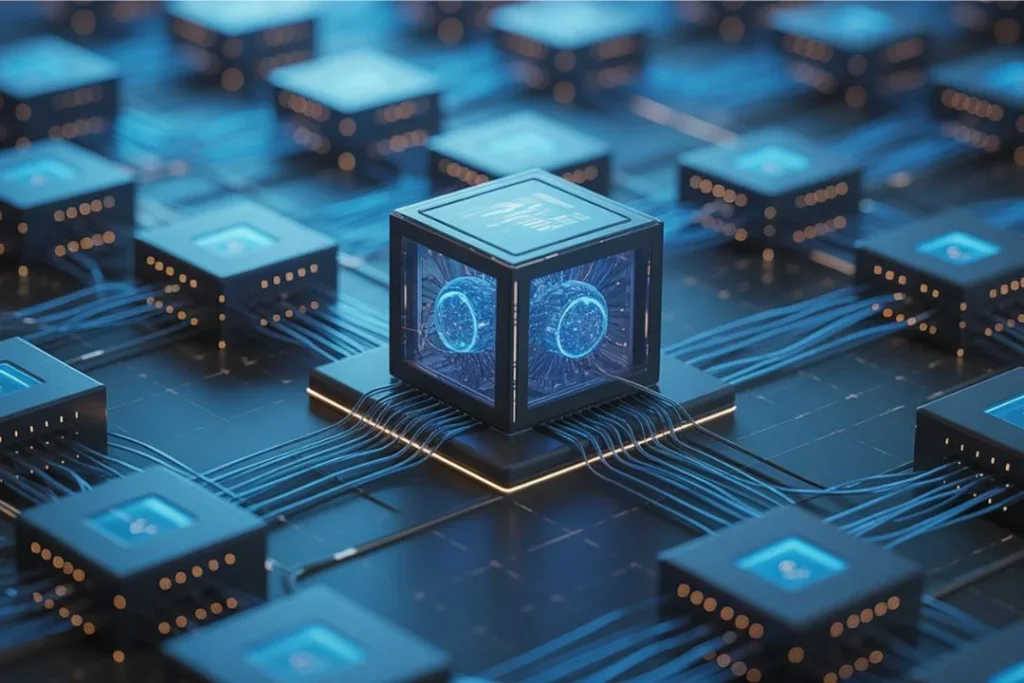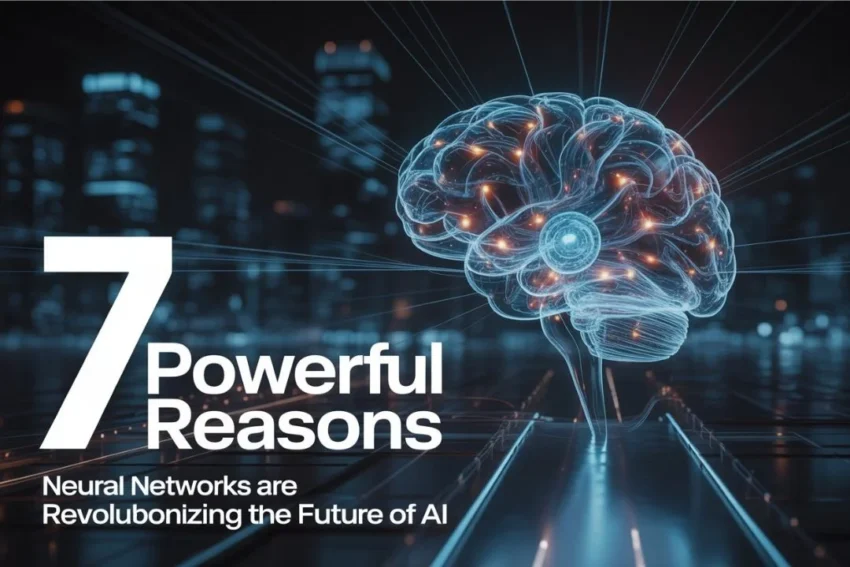Introduction
In the realm of artificial intelligence (AI) and machine learning (ML), few concepts have been as transformative and foundational as Neural Networks. From powering advanced speech recognition systems like Siri and Alexa to enabling life-saving innovations in healthcare and autonomous vehicles, Neural Networks are reshaping the way machines understand the world.
But what exactly are Neural Networks? How do they function, and why have they become so crucial in today’s digital age?
In this comprehensive guide, we will explore everything you need to know about Neural Networks—from their structure and learning process to their applications, strengths, limitations, and future potential.
1. What Are Neural Networks?
At its core, a Neural Network is a computing system inspired by the structure and functioning of the human brain. Just as our brains consist of billions of interconnected neurons that process and transmit information, a Neural Network comprises artificial neurons or “nodes” that process data and learn patterns.
These networks are designed to simulate human learning, enabling machines to recognize patterns, make decisions, and improve over time with more data.
In machine learning, Neural Networks are often referred to as Artificial Neural Networks (ANNs). They are a key technology in deep learning, a subfield of ML that deals with models capable of learning from vast amounts of unstructured data such as images, text, and sound.
2. How Neural Networks Work
To understand Neural Networks, let’s break down the essential components:
a. Neurons (Nodes)
Each neuron in the network receives input, performs a calculation (usually a weighted sum), applies an activation function, and passes the result to the next layer. These neurons mimic the functionality of biological neurons in the brain.
b. Layers
A Neural Network is composed of three types of layers:
- Input Layer: Receives the initial data.
- Hidden Layers: Process and transform the inputs. The more layers there are, the “deeper” the network.
- Output Layer: Produces the final result (e.g., a classification or prediction).
c. Weights and Biases
Every connection between neurons has a weight, which determines the importance of the input, and a bias, which shifts the activation.
d. Activation Functions
These introduce non-linearity to the model, allowing the network to solve complex problems. Common functions include:
- ReLU (Rectified Linear Unit)
- Sigmoid
- Tanh
- Softmax (for classification tasks)
3. The Learning Process
Neural Networks learn by adjusting weights and biases through a process called backpropagation, which is guided by an optimization algorithm like Stochastic Gradient Descent (SGD) or Adam.
Step-by-Step Learning:
- Forward Propagation: Input data passes through the network to generate output.
- Loss Calculation: The error between the predicted output and actual result is calculated using a loss function (e.g., Mean Squared Error).
- Backpropagation: The error is sent backward through the network to update weights.
- Iteration: This process repeats for many cycles (epochs) until the network learns the optimal parameters.
4. Types of Neural Networks
a. Feedforward Neural Networks (FNNs)
- The simplest type.
- Information flows in one direction (no cycles).
- Used in basic classification and regression tasks.
b. Convolutional Neural Networks (CNNs)
- Specially designed for image and video data.
- Uses convolutional layers to detect patterns like edges and shapes.
- Applications: image recognition, object detection, medical imaging.
c. Recurrent Neural Networks (RNNs)
- Designed for sequential data like time-series and language.
- Maintains memory of previous inputs using loops.
- Variants: LSTM (Long Short-Term Memory), GRU (Gated Recurrent Units).
d. Autoencoders
- Used for unsupervised learning.
- Learns to compress data and reconstruct it.
- Applications: noise reduction, anomaly detection.
e. Generative Adversarial Networks (GANs)
- Comprises two networks: Generator and Discriminator.
- The Generator creates data; the Discriminator evaluates its authenticity.
- Applications: image generation, deepfakes, art synthesis.
f. Transformer Networks
- Highly effective in Natural Language Processing (NLP).
- Use attention mechanisms to focus on important parts of data.
- Examples: GPT (by OpenAI), BERT (by Google).
5. Applications of Neural Networks
Neural Networks are powering breakthroughs across countless industries:
a. Healthcare
- Disease diagnosis from medical images (X-rays, MRIs).
- Drug discovery and genomics.
- Personalized treatment recommendations.
b. Finance
- Credit scoring and fraud detection.
- Stock price prediction and algorithmic trading.
- Customer behavior analysis.
c. Retail & E-commerce
- Recommendation engines (e.g., Amazon, Netflix).
- Customer sentiment analysis.
- Inventory and demand forecasting.
d. Automotive
- Self-driving cars (Tesla, Waymo).
- Object detection and route planning.
- Real-time decision-making systems.
e. Natural Language Processing (NLP)
- Machine translation (Google Translate).
- Chatbots and virtual assistants.
- Text summarization and sentiment analysis.
f. Security & Surveillance
- Facial recognition systems.
- Anomaly detection in video feeds.
- Cybersecurity threat detection.
6. Strengths of Neural Networks
- High Accuracy: Especially in image and voice recognition.
- Adaptability: Can learn from raw data without explicit feature engineering.
- Scalability: Perform better as more data becomes available.
- Versatility: Applicable to various domains — from entertainment to aerospace.
7. Limitations of Neural Networks
Despite their power, Neural Networks have challenges:
- Data Requirements: Require large datasets to perform well.
- Computational Cost: Training deep networks needs powerful GPUs/TPUs.
- Overfitting: May memorize training data rather than generalize.
- Lack of Interpretability: Difficult to understand decision-making (“black box”).
- Bias and Fairness: Models may inherit biases from training data.
- Energy Consumption: Training large models consumes substantial electricity.
8. Future of Neural Networks
Neural Networks are evolving rapidly, with research focusing on:
a. Efficient AI
- Pruning, quantization, and model compression to reduce size and energy use.
- TinyML: bringing neural networks to low-power edge devices.
b. Explainable AI (XAI)
- Making Neural Networks more transparent and trustworthy.
- Important in critical sectors like healthcare and law.
c. Transfer Learning & Few-Shot Learning
- Training models on one task and applying them to another.
- Reduces data requirements and training time.
d. Neuro-symbolic Systems
- Combining Neural Networks with symbolic reasoning for more powerful AI.
e. Brain-Inspired Models
- Spiking Neural Networks and neuromorphic computing.
9. Best Practices for Building Neural Networks
- Start Simple: Use small models and scale up.
- Clean Your Data: Ensure high-quality, preprocessed inputs.
- Normalize Inputs: Improves stability and convergence.
- Use Dropout & Regularization: To prevent overfitting.
- Monitor Training: Watch for divergence, plateauing, or overfitting.
- Tune Hyperparameters: Learning rate, batch size, etc., greatly affect performance.
- Evaluate on Test Data: Always check model generalization.
- Document & Visualize: Track changes and visualize outputs for better understanding.
FAQs about Neural Networks
What is a Neural Network in simple terms?
A Neural Network is a type of machine learning model designed to work like the human brain. It processes data through layers of interconnected nodes (called neurons) to recognize patterns, make decisions, and learn from experience.
How do Neural Networks learn?
Neural Networks learn by adjusting internal parameters (weights and biases) based on the difference between predicted and actual results. This process involves forward propagation, loss calculation, and backpropagation, optimized over many iterations using algorithms like gradient descent.
What are the main types of Neural Networks?
- Feedforward Neural Networks (FNNs) – Basic structure with one-way data flow
- Convolutional Neural Networks (CNNs) – For image and video processing
- Recurrent Neural Networks (RNNs) – For sequence data like time series and text
- Autoencoders – For compression and anomaly detection
- GANs (Generative Adversarial Networks) – For generating realistic data
- Transformers – Used in NLP (e.g., ChatGPT, BERT)
What is the difference between AI, Machine Learning, and Neural Networks?
- AI (Artificial Intelligence): The broad concept of machines performing tasks that mimic human intelligence.
- Machine Learning: A subset of AI focused on systems that learn from data.
- Neural Networks: A type of machine learning model inspired by the human brain, used for complex pattern recognition.
What are the real-world applications of Neural Networks?

- Image recognition (e.g., facial detection)
- Voice assistants (e.g., Alexa, Siri)
- Medical diagnosis (e.g., cancer detection)
- Financial forecasting and fraud detection
- Self-driving cars and robotics
- Natural language processing and translation
10. Conclusion
Neural Networks represent one of the most powerful tools in modern AI, enabling machines to perform tasks once considered exclusive to human intelligence. As technology advances, these systems will only become more sophisticated, accessible, and essential to our lives.
Understanding how Neural Networks work, what they can do, and how to use them responsibly is not just useful for engineers and data scientists—but critical for anyone navigating the 21st-century digital world.
